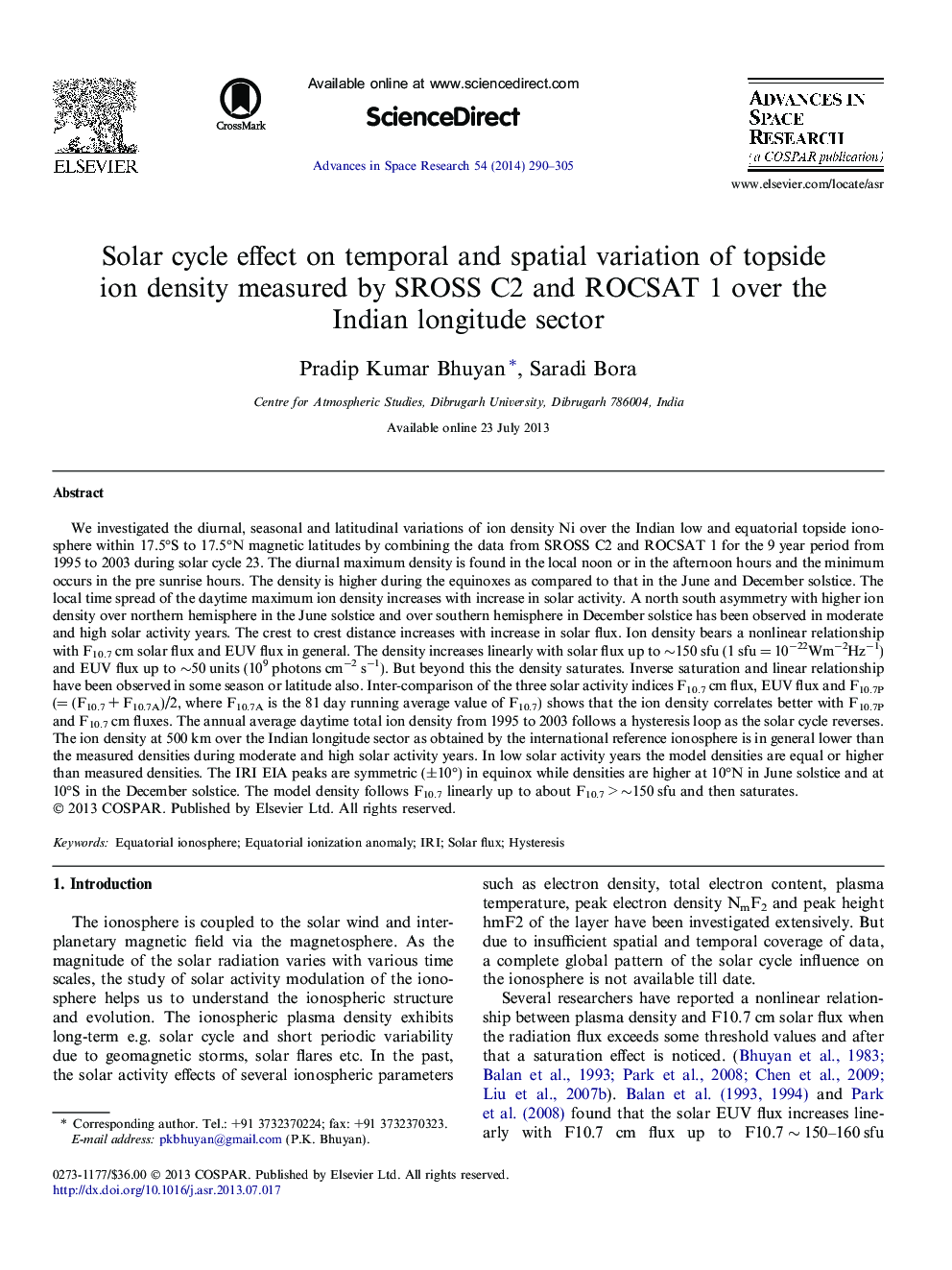| کد مقاله | کد نشریه | سال انتشار | مقاله انگلیسی | نسخه تمام متن |
|---|---|---|---|---|
| 1764894 | 1020076 | 2014 | 16 صفحه PDF | دانلود رایگان |
عنوان انگلیسی مقاله ISI
Solar cycle effect on temporal and spatial variation of topside ion density measured by SROSS C2 and ROCSAT 1 over the Indian longitude sector
دانلود مقاله + سفارش ترجمه
دانلود مقاله ISI انگلیسی
رایگان برای ایرانیان
کلمات کلیدی
موضوعات مرتبط
مهندسی و علوم پایه
علوم زمین و سیارات
علوم فضا و نجوم
پیش نمایش صفحه اول مقاله

چکیده انگلیسی
We investigated the diurnal, seasonal and latitudinal variations of ion density Ni over the Indian low and equatorial topside ionosphere within 17.5°S to 17.5°N magnetic latitudes by combining the data from SROSS C2 and ROCSAT 1 for the 9 year period from 1995 to 2003 during solar cycle 23. The diurnal maximum density is found in the local noon or in the afternoon hours and the minimum occurs in the pre sunrise hours. The density is higher during the equinoxes as compared to that in the June and December solstice. The local time spread of the daytime maximum ion density increases with increase in solar activity. A north south asymmetry with higher ion density over northern hemisphere in the June solstice and over southern hemisphere in December solstice has been observed in moderate and high solar activity years. The crest to crest distance increases with increase in solar flux. Ion density bears a nonlinear relationship with F10.7 cm solar flux and EUV flux in general. The density increases linearly with solar flux up to â¼150 sfu (1 sfu = 10â22Wmâ2Hzâ1) and EUV flux up to â¼50 units (109 photons cmâ2 sâ1). But beyond this the density saturates. Inverse saturation and linear relationship have been observed in some season or latitude also. Inter-comparison of the three solar activity indices F10.7 cm flux, EUV flux and F10.7P (= (F10.7 + F10.7A)/2, where F10.7A is the 81 day running average value of F10.7) shows that the ion density correlates better with F10.7P and F10.7 cm fluxes. The annual average daytime total ion density from 1995 to 2003 follows a hysteresis loop as the solar cycle reverses. The ion density at 500 km over the Indian longitude sector as obtained by the international reference ionosphere is in general lower than the measured densities during moderate and high solar activity years. In low solar activity years the model densities are equal or higher than measured densities. The IRI EIA peaks are symmetric (±10°) in equinox while densities are higher at 10°N in June solstice and at 10°S in the December solstice. The model density follows F10.7 linearly up to about F10.7 > â¼150 sfu and then saturates.
ناشر
Database: Elsevier - ScienceDirect (ساینس دایرکت)
Journal: Advances in Space Research - Volume 54, Issue 3, 1 August 2014, Pages 290-305
Journal: Advances in Space Research - Volume 54, Issue 3, 1 August 2014, Pages 290-305
نویسندگان
Pradip Kumar Bhuyan, Saradi Bora,